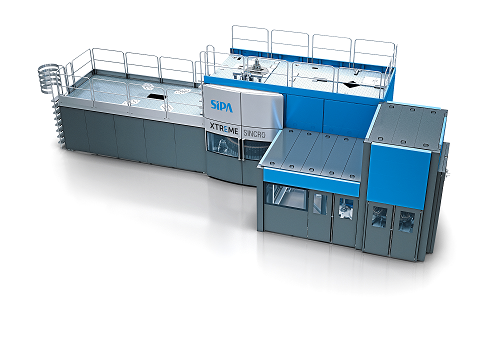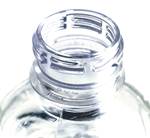New in PET: Injection-Compression-Stretch-Blow Molding
Continuous, rotary injection-compression molding of preforms is linked to rotary stretch-blow molding.

At November’s BrauBeviale show in Nuremberg, Germany, of Italy (U.S. office in Atlanta) has launched Xtreme Syncro, billed as the world’s first injection-compression-stretch-blow molding (ICSBM) system. It brings together SIPA’s Xtreme preform compression molding system with a high-speed stretch-blow unit.
As reported in our K 2013 show wrap-up last February, the Xtreme continuous, rotary injection-compression system reportedly produces preforms up to 10% lighter than any made by conventional injection molding, but without sacrificing key properties. Before now, the maximum length-to-wall-thickness ration (L/t) of a preform was little more than 45; but Xtreme technology is claimed to make an 80 L/t ratio a commercial reality.
Injection-compression simplifies thin-wall molding by having the molds slightly open when injection starts, then closing them as dosing finishes. This means lower injection pressure, lower clamp force, and less stress on the melt, which means less acetaldehyde (AA) generation and less reduction in IV.
Xtreme’s mechanical layout is similar to rotary stretch-blow machines. It is all-pneumatic, with no hydraulics. Molds are mounted in blocks of three on a high-speed carousel fed by an extruder that runs continuously. It delivers melt to dosing devices directly under the preform molds.
In the new system, preform molding is directly coupled to SIPA’s latest SFR EVO3 rotary reheat stretch-blow unit (also discussed last February), which can put out 2250 bottles/hr per cavity. The Xtreme portion alone is said to cut energy use around 10% through lower temperatures and pressures. And integration with the bottle blowing system eliminates most of the need to reheat the preforms. Conventional IR ovens are replaced by small ovens that use highly efficient induction heating directed only at areas of the preforms just below the neck. The system can also be connected directly to SIPA’s bottle filling system.
Related Content
-
BMW Group Vehicle to Adopt 3D Printed Center Console
A vehicle coming to market in 2027 will include a center console carrier manufactured through polymer robot-based large-format additive manufacturing (LFAM).
-
Foam-Core Multilayer Blow Molding: How It’s Done
Learn here how to take advantage of new lightweighting and recycle utilization opportunities in consumer packaging, thanks to a collaboration of leaders in microcellular foaming and multilayer head design.
-
3D Printed Spine Implants Made From PEEK Now in Production
Medical device manufacturer Curiteva is producing two families of spinal implants using a proprietary process for 3D printing porous polyether ether ketone (PEEK).








